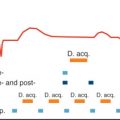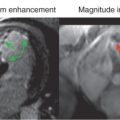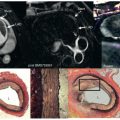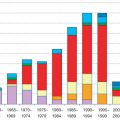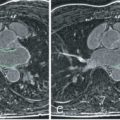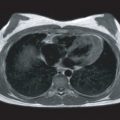Magnetic resonance imaging (MRI) has gained popularity over the last decade because of its excellent soft tissue imaging capability and superior spatial resolution as well as lack of ionizing radiation. These properties have led to expanded indications for MRI. At the same time, with the aging of the US population, the need for cardiac implantable electronic devices (CIEDs) is increasing in parallel to that for MRI indication. Despite its advantages, MRI is relatively contraindicated in individuals with CIEDs because of the possibility for heating, induction, and electromagnetic interference. This is a public health issue because it limits diagnostic access to MRI for millions of CIED recipients and ever-increasing trends for device implantation. According to a recent 61-country survey, there was a significant rise in the use of implantable cardioverter-defibrillators (ICDs) by the year 2009 compared with 2005, with most implants occurring in the United States (434 new implants per million population). Moreover, the high prevalence of comorbidities in the same population indicates potential benefits from MRI. Within 1-year post implant, 17% of the CIED recipients have an MRI indication, and estimates indicate a lifetime need for MRI in up to 75% of recipients.
Owing to an increased awareness of the public health importance of this issue, device manufacturers have focused on the development of MRI conditional CIEDs, device systems that demonstrate no known hazards in a specified MRI environment with specified conditions of use. Most important, to be considered MRI conditional, all implanted CIED components must be tested together for electromagnetic compatibility and approved for such use by the US Food and Drug Administration (FDA). Other CIED systems are considered to be “legacy” systems or “nonconditional” for MRI.
A decade ago, the presence of a CIED was considered an absolute contraindication for MRI. However, this approach was challenged with numerous case series demonstrating no significant safety issues when MRI was performed with specific protocols to minimize electromagnetic interference. Today, we know that MRI examination is feasible and can be performed with minimal risk as long as a well-defined and tested safety protocol is followed. According to current guidelines, MRI examination should be avoided in CIED recipients, but, if necessary, it can be done in experienced centers under specific protocols.
In this chapter, we review the current data on nonconditional and conditional CIEDs and experiences with MRI examination, summarize the Johns Hopkins protocol for MRI safety in the setting of nonconditional CIED systems, and review associated MRI-related artifacts.
Cardiac Implanted Electronic Devices and Magnetic Resonance Imaging Interactions
Owing to potential interactions with the electromagnetic environment, CIEDs are classified as MRI unsafe or MRI conditional based upon the intended design and prior experience with the CIED in an MRI environment ( Table 11.1 ). Potential interactions between CIED systems and the MRI environment are summarized in Table 11.2 . The static magnetic field, in addition to radiofrequency (RF) energy generated during MRI, may interact with the CIED and lead to adverse effects. The magnetic field strength, RF power, patient position/orientation within the scanner, CIED type, and patient characteristics are all important variables that help quantify the magnitude of interaction.
| Category | Description |
|---|---|
| MR safe | No known hazards in an MR environment |
| MR conditional | No known hazards in a specified MR environment with specified conditions |
| MR unsafe | Known to pose hazards in all MR environments |
| Force and torque |
|
| Induced electrical current |
|
| Heating and tissue damage |
|
| Reed switch activity |
|
| Inappropriate function |
|
Clinical Studies With Nonmagnetic Resonance Imaging Conditional Devices
Up to 1.5 T
Clinical studies of MRI in the setting of nonconditional devices are summarized in Table 11.3 . The first study was performed in 1984 by Fetter et al., who examined the in vivo effects of MRI on CIED function. Although device parameters did not change, an asynchronous pacing mode was activated during MRI scanning in one patient. After this initial experience, in 1996, Gimbel et al. examined five patients with pacemakers undergoing 0.5 T MRI scan and observed a 2-second pause in a pacemaker-dependent patient. In 2000, Sommer et al. evaluated the effects of 0.5 T MRI on pacemaker generators and leads in vitro, then examined 44 non–pacemaker-dependent patients in vivo, and reported no adverse events. The following year, the same group reported a prospective study that investigated safety at 0.5 T in 32 pacemaker patients undergoing MRI. Lead impedance, sensing thresholds did not change after MRI. They showed overall safety; however, battery voltage decreased immediately after MRI, and returned to baseline at the 3-month follow-up.
| Study Group | Year | Patient No. | Device | MRI Scanner | Findings |
|---|---|---|---|---|---|
| Gimbel et al. | 1996 | 5 | Pacemaker | 0.5 T | Pause detected in a pacemaker-dependent patient with unipolar lead |
| Sommer et al. | 2000 | 44 | Pacemaker | 0.5 T | No adverse events; no change in device and lead parameters |
| Vahlhaus et al. | 2001 | 32 | Pacemaker | 0.5 T | Battery voltage decreased after MRI that turned back to baseline in 3 months; reed switch deactivation was observed in 37.5% of the patients |
| Martin et al. | 2004 | 54 | Pacemaker | 1.5 T | Pacing threshold was changed in 9.4% of the leads |
| Del Ojo et al. | 2005 | 13 | Pacemaker | 2.0 T | No adverse events; no change in device and lead parameters |
| Gimbel et al. | 2005 | 7 | ICD | 1.5 T | Power-on reset occurred in 1 patient |
| Gimbel et al. | 2005 | 10 | Pacemaker | 1.5 T | Minor changes in capture thresholds |
| Nazarian et al. | 2006 | 55 | Pacemaker and ICD | 1.5 T | No adverse events; no change in device and lead parameters |
| Sommer et al. | 2006 | 82 | Pacemaker | 1.5 T | Capture threshold was increased; increased troponin levels in 4 cases. One of the capture threshold increases was associated with elevated troponin levels |
| Gimbel et al. | 2008 | 14 | Pacemaker, ICD and loop recorder | 3.0 T | No change in device and lead parameters. One patient reported chest pain |
| Naehle et al. | 2008 | 44 | Pacemaker | 3.0 T | No adverse events; no change in device and lead parameters |
| Mollerus et al. | 2008 | 37 | Pacemaker and ICD | 1.5 T | No adverse events; no change in device and lead parameters |
| Naehle et al. | 2009 | 18 | ICD | 1.5 T | A decrease was observed in battery voltage; electromagnetic interference was interpreted as VF in 2 cases |
| Naehle et al. | 2009 | 47 | Pacemaker | 1.5 T | Pacing threshold and battery decreased after serial MRI |
| Pulver et al. | 2009 | 11 | Pacemaker | 1.5 T | Minimal change in device voltage; lead threshold; lead impedance in 6 patients |
| Mollerus et al. | 2009 | 52 | Pacemaker and ICD | 1.5 T | No adverse events; no change in device and lead parameters |
| Halshtok et al. | 2010 | 18 | Pacemaker and ICD | 1.5 T | Power-on reset occurred in 2 patients |
| Strach et al. | 2010 | 114 | Pacemaker | 0.2 T | No adverse events; no change in device and lead parameters |
| Burke et al. | 2010 | 38 | Pacemaker and ICD | 1.5 T | No adverse events; no change in device and lead parameters |
| Mollerus et al. | 2010 | 103 | Pacemaker and ICD | 1.5 T | Sensing amplitudes and pacing impedances decreased significantly |
| Nazarian et al. | 2011 | 438 | Pacemaker and ICD | 1.5 T | Power-on reset in 1.5% of the patients |
| Juntilla et al. | 2011 | 10 | ICD | 1.5 T | No adverse events; no change in device parameters |
| Naehle et al. | 2011 | 32 | Pacemaker and ICD | 1.5 T | No adverse events; no change in device and lead parameters |
| Cohen et al. | 2012 | 109 | Pacemaker and ICD | 1.5 T | Battery voltage decreased in 4%; pacing threshold increased in 3%; pacing lead impedance changed in 6% |
| Muehling et al. | 2014 | 356 | Pacemaker | 1.5 T | No adverse events; no change in device and lead parameters |
| Higgins et al. | 2015 | 198 | Pacemaker and ICD | 1.5 T | Power-on reset in 8 patients |
| Sheldon et al. | 2015 | 42 | CRT-D, CRT-P, pacemaker | 1.5 T | No adverse events; no change in device and lead parameters |
| Russo et al. | 2017 | 1500 | Pacemaker and ICD | 1.5 T | No deaths or lead failures; one ICD generator was replaced because it could not be interrogated after MRI |
| Nazarian et al. | 2017 | 1509 | Pacemaker and ICD | 1.5 T | No deaths or lead failures; one pacemaker needed replacement because it could not be reprogrammed; no clinically significant change in lead parameters |
In the last decade, several studies have examined the interaction of nonconditional CIED systems with MRI. Roguin et al. studied CIED behavior and changes in system parameters in vitro and in vivo in animal models. Older (pre-2000) ICD systems were damaged following MRI, but no significant changes were observed in newer (2000 and later) systems. Pathologic examination showed limited necrosis or fibrosis adjacent to the lead tip that was not different than that observed in animals that were not exposed to MRI. Later, Martin et al. performed 62 MRI examinations in 54 pacemaker patients. There were no adverse events; but changes in pacing threshold were observed in 10 leads, 2 of which required a change in programmed output.
Because of significant adverse events reported with older-generation ICDs, it was first thought that MRI was an absolute contraindication in the setting of ICD systems. Junttila et al. performed three serial cardiac MRI scans in 10 ICD recipients. In that series, patients reported no symptoms during the MRI examination, and none of the examinations required early termination. No adverse event or change in device/lead parameters was observed during short-term and long-term follow-up. Similarly, in another small cohort of 10 ICD recipients, there were no adverse events after 1.5 T MRI. Naehle et al. performed 1.5 T MRI in 18 ICD recipients. Although no significant pacing threshold and lead impedance changes were observed, battery voltage significantly decreased. In a subset of patients, the voltage recovered completely; however, in the remaining patients, decreased battery voltage persisted. Moreover, RF noise was oversensed as ventricular fibrillation (VF), but no therapies were initiated. There was no evidence of overheating or tissue damage as assessed by troponin level.
Sommer et al. performed 115 nonthoracic 1.5 T MRI examinations in 85 patients with CIED. There were no arrhythmias, but pacing capture threshold increased significantly. After four MRI examinations, serum troponin levels increased, which was associated with the increased pacing threshold in one case. Decreased battery voltage was again noted immediately after the MRI; but this drop was transient in most cases and returned to baseline at follow-up. Naehle et al. evaluated the effects of serial MRI in 47 CIED recipients. There was a statistically significant decrease in battery voltage and pacing capture threshold after two or more MRI examinations, but no clinically relevant or cumulative changes that would affect device longevity were noted. In 2011, the same group reported another series pacemaker and ICD patients that underwent safe cardiovascular magnetic resonance (CMR) imaging without any change in pacing capture threshold, lead impedance, or troponin levels.
Cardiac resynchronization therapy and coronary sinus leads also appear to be safe. Little is known about the safety of epicardial leads. In a study by Pulver et al., 11 patients with pediatric and adult congenital heart disease underwent 1.5 T MRI, including 6 patients with epicardial leads. There were no adverse events such as symptoms that could be related to lead heating. Of note, three patients with epicardial leads underwent CMR without any safety issue.
Cohen et al. performed 125 clinically indicated MRI examinations in 109 patients with CIED, including ICD systems, and compared the outcomes with 50 CIED recipients who did not have an MRI. The authors did not report MRI-related adverse events; however, they did observe small nonsignificant changes in device parameters after MRI that were similar to their control group. Such insignificant changes may be unrelated to MRI itself and reflect random physiologic variations in the interaction CIED tissue interface.
Muehling et al. also examined 356 CIED recipients who underwent 1.5 T cranial MRI. There was no significant change in device parameters, and troponin levels were stable immediately after MRI. Moreover, patients were followed for 1 year and device interrogations were performed at 2 weeks, 2 months, 6 months, and 12 months after the MRI. No significant change was observed in device-related parameters during follow-up.
Finally, the MagnaSafe Registry is a multicenter, prospective cohort study designed to evaluate the safety of non-MRI conditional CIED systems following nonthoracic 1.5 T MRI. The MagnaSafe Registry included 1500 cases in which patients had a nonthoracic MRI with a pacemaker ( n = 1000) or ICD ( n = 500) implanted after 2001. Patients with abandoned or inactive lead were excluded. There were no deaths, lead failures, losses of capture, or ventricular arrhythmias during the index MRI. Prespecified changes in lead impedance, pacing threshold, battery voltage, and P-wave and R-wave amplitude were exceeded in a small number of cases. Repeat MRI was not associated with an increase in adverse events.
In addition, another large study from our Johns Hopkins group reported on MRI safety at 1.5 T in 1509 patients who had a pacemaker (58%) or ICD (42%) and underwent 2103 thoracic and nonthoracic MRI. The pacing mode was changed to asynchronous mode for pacing-dependent patients and to demand mode for others. No long-term clinically significant adverse events were reported. In 9 (0.4%) MRI examinations, the device reset to a backup mode, which was transient in all but one device. An acute decrease in P wave amplitude occurred in 1% of studies that increased to 4% of patients on long-term follow-up. The observed changes in lead parameters were not clinically significant and did not require device revision or reprogramming.
There are limited data on high-risk groups such as pacemaker-dependent patients. Gimbel et al. examined 10 pacemaker-dependent patients who underwent 1.5 T MRI. There were no clinical adverse events; however, minor capture threshold changes were observed in 7 patients. Higgins et al. reviewed 198 CIED recipients who underwent 1.5 T MRI. Power-on reset events occurred in 8 patients, all patients having older-generation devices. Importantly, devices reset to an inhibited pacing mode. Finally, 137 (9%) of the 1509 patients in the previously mentioned study of Nazarian et al. were pacer-dependent (including 22 of whom had an ICD with asynchronous programming mode capability). There was similar safety as in the overall study. Thus MRI examination should be carefully considered and closely monitored in pacemaker-dependent patients with older (pre-2000) devices.
Retained/Orphaned Leads
Patients with retained/orphaned leads constitute another high-risk group, because of the possibility of increased heating. An in vitro study compared retained/orphaned leads with pacemaker-attached leads, and showed that heating of the retained lead was significantly higher, and the risk was significantly correlated with lead length. In another study by Higgins et al., the safety of retained pacemaker lead was evaluated in 19 patients who underwent nonthoracic 1.5 T MRI. There were no adverse events and in a subset of patients who had their devices reconnected to the retained leads, lead parameters were unchanged. The same study group evaluated troponin levels in 348 patients, including 22 patients with abandoned leads. There was no change in troponin levels in these patients, which may serve as a surrogate for myocardial thermal damage. Finally, low-field (0.2 T) MRI was performed in 114 CIED patients who required MRI examination for urgent indications, including pacemaker-dependent patients and patients with abandoned leads. No adverse events or changes in device parameters were reported.
High-Field Magnetic Resonance
There are limited studies with high-field MRI. Del Ojo et al. performed 2 T MRI in 13 patients with pacemakers. This is one of the initial studies that showed MRI can be safely performed in CIED recipients, even though the magnetic field is relatively high. 3 T MRIs are most commonly used in neurologic imaging. Because of the increased magnetic field strength, some risks are theoretically higher. However, neurologic imaging with transmit-receive head coils decreases power deposition upon the CIED and mitigates the risk of heating and current generation. In contrast, the CIED will be exposed to more force and torque. Naehle et al. evaluated brain 3 T MRI in CIED recipients. No safety issues, changes in device parameters, or changes in troponin levels occurred in the 44 patients who underwent 55 brain examinations at 3 T. Similarly, Gimbel et al. safely performed 3 T MRI in 14 patients without adverse effects or changes in device parameters. However, in the following year, Gimbel et al. reported two cases of pacing inhibition with 3 T MRI.
Recommendations
According to current guidelines, patients with MRI nonconditional devices may undergo 1.5 T MRI if the benefit of the MRI overweighs the risk of the procedure, provided that the CIED is a new-generation device and appropriate supervision is provided. The following are recommended by the guidelines.
- 1.
MRI can be performed if there is no alternative imaging modality, the CIED is a new-generation system that has been implanted for at least 6 weeks, and there are no abandoned or epicardial leads.
- 2.
The CIED should be interrogated before examination, and system parameters should be adjusted according to patient and device characteristics.
- 3.
During the MRI examination, experienced personnel should perform continuous monitoring.
- 4.
Device interrogation should be performed after the scan.
Stay updated, free articles. Join our Telegram channel

Full access? Get Clinical Tree


